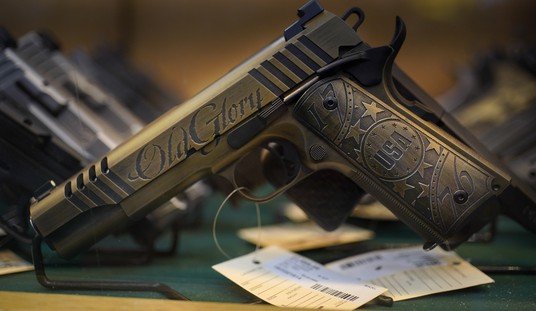When approached by HUMAN EVENTS editor Jed Babbin with the idea that we might come up with a list of the “all-time greatest American patriotic novels,” I knew it would be easier said than done, and for a number of reasons.
First, American patriotic books that initially come to my mind are Band of Brothers, A Rumor of War, and several others, none of which are novels, but works of non-fiction.
Second, the list would have to be highly subjective: in other words, reflecting what I personally believe to be “the greatest American patriotic novels” based on my own life experiences and influences: the fact that I am Southern would certainly influence any such list, as would my military service, as well as time spent covering conflict overseas as a civilian journalist.
So what do I consider to be the “all-time greatest American patriotic novels”? I’ve come up with about 15, and culled them down to 10, many of which won Pulitzers, and all of which have since been adapted into film.
Without ranking, because I have great and — in most cases — equal affection for them all, the novels are:
THE RED BADGE OF COURAGE by Stephen Crane (first published in 1895). An oozing-with-patriotism Civil War novel, and clearly one which has influenced other war novelists, and – for me personally – taught me as a boy that war is horrible, and that courage does not mean the absence of fear. It means that one must press on despite the fear.
GONE WITH THE WIND by Margaret Mitchell (1936). Again, a Civil War novel, and from a Southerner’s perspective. It truly is one of the great American patriotic novels when one considers principal character Scarlett O’Hara’s love of country (primarily her Georgia plantation world, Tara), her spirit and her almost-frontier-like determination to survive against all odds: Nothing more American or patriotic than those virtues.
DRUMS ALONG THE MOHAWK by Walter D. Edmonds (1936). A novel of the American Revolution not unlike the basic thread running through the Civil War’s Gone with the Wind. In Edmond’s book, we experience a young married couple’s struggle to survive against British forces and allied Indians on the frontier.
THE BRIDGES AT TOKO-RI by James Michener (1954). Michener’s oft-quoted tale of Naval aviation during the Korean War, spawned the great rhetorical – and yes, patriotic – question in the novel’s film adaptation, “Where do we get such men?”
RUN SILENT, RUN DEEP by Edward L. Beach, Jr. (1955). A World War II-era submarine story, this novel chronicles the lives of the officers and men of USS Walrus as they battle personalities and the Japanese fleet in the Pacific. In “Reflections on Courage” (Parameters, Winter 1997-98), U.S. Army Col. Henry G. Gole writes, “Run Silent, Run Deep has been the standard against which American submarine books have been measured. … Beach [a real-life submarine commander and recipient of the Navy Cross] keeps us reading and soaking up service lore. His pride in his service – and this applies to all the submarine books, German and American – comes shining through.”
THE GREEN BERETS by Robin Moore (1965). Another of the great patriotic tales of my boyhood (though I actually saw the 1968 film adaptation – starring John Wayne – of the novel before reading the book) that surely spurred me toward an interest in the military. The Green Berets is a very pro-American story of U.S. Army Special Forces in Vietnam.
THE KILLER ANGELS by Michael Shaara (1974). A third Civil War novel (Yes, we Southerners are a bit obsessed with this particular war, which – if war was like a football game where points in the first three quarters count as much as those in the fourth – we might well have won.), this story looks at the Battle of Gettysburg through the eyes of several of the battle’s (and the war’s) great commanders, as well as a smattering of junior officers and NCOs enabling the reader to fully connect.
THE GREAT SANTINI by Pat Conroy (1976). You simply cannot be a Marine and a Southerner and not love this story set in the South Carolina lowcountry. Based on Conroy’s relationship with his own father, this story is dark at times, but full of heroic characters. And no one is more patriotic than the all-Marine fighter pilot Bull Meecham, the great – as he calls himself – Santini.
THE LORDS OF DISCIPLINE by Pat Conroy (1980). Had this book been published when I was a boy instead of when I was a college sophomore, I probably would have ended up at the Citadel (the Military College of South Carolina, which this book – though a work of fiction – was clearly based on) instead of the University of South Carolina. Though the book’s look-see into the previously exclusive, often mystical, occasionally ugly (as is The Great Santini) otherworld of military culture and tradition, probably had something to do – as did other influences – with my joining Uncle Sam’s tradition-rich Marine Corps. For as Conroy writes, "No Southern man is complete without a tenure under military rule."
THE HUNT FOR RED OCTOBER by Tom Clancy (1984). Not only a great American patriotic novel when considering the book’s principal characters and their quests: Soviet submarine skipper Capt. Marko Ramius, and his desire to become an American, and American CIA analyst Jack Ryan, who ends up helping Ramius to that end. But this is just an incredible Cold War submarine story, and nothing has ever made for more exciting reading than tales of the “silent service.”
There are others, and we’ll look at non-fiction in the coming weeks.







Join the conversation as a VIP Member